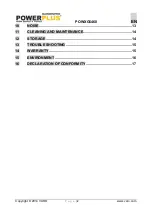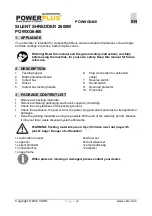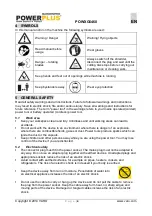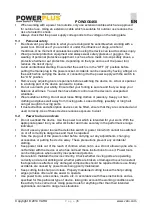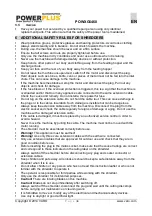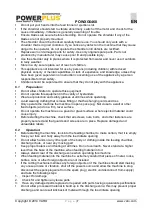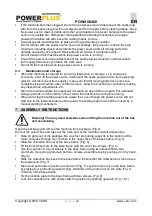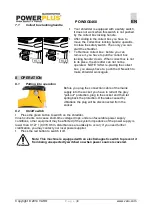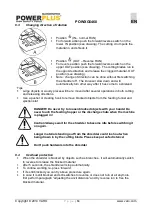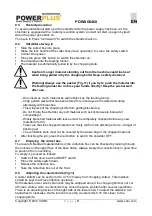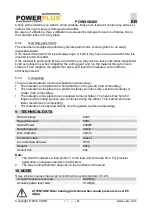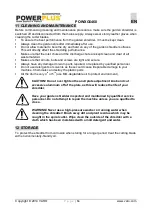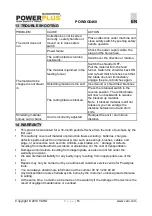
POWXG6460
EN
Copyright © 2014 VARO
P a g e
|
12
www.varo.com
After adjusting, make some cutting tests to check if the best effect is achieved. Ensure that the
chopping knife is in contact with the counter knife, especially when shredding soft materials or
wet, woody branches. When you use strong and dry materials the counter knife should have a
corresponding distance to the chopping knife to avoid any damage to the shredder.
Warning! To avoid and damage to the shredder make sure that the
cutting blade does not come into contact with the anvil blade.
8.9
Shredding tips
Heavy material or branches may result in blocking of the cutting blades during continuous
cutting.
Soft materials, such as leaves or stems may block the feeding opening.
Always feed the material to be chopped from the right corner of the feeding funnel.
Check the material to be chopped carefully. Make sure there is no contact with stones or
nails as these could damage the shredder seriously.
To realease blocked material, switch the shredder on and press the
“reverse” button. The
blade drumr will release the jammed shredding material. If it is still blocked, you can
increase the distance between the anvil & the drum knive (see described before in this
manual). Try reverse run again to free the blocked material. Readjust the anvil to your
personal choise.
Keep hold of branches while feeding them into the shredder until they are automatically
drawn in.
Keep to the working speed of the shredder and do not overload it.
To protect the shredder from clogging, shred wilted garden waste that has been left for a
few days and shred thin twigs alternately with branches.
Before you shred roots, remove any remaining soil and stones from them Do not shred
soft, damp material such as kitchen waste, but take it straight to the compost.
Keep a few dry branches for the end, as they will help clean the shredder.
Only switch the shredder off when all of the shredding material has passed through the
cylinder. Otherwise, the cylinder may jam the next time you switch the shredder on.
8.9.1
Mulching
The following types of material can be mulched in the shredder:
Twigs and branches.
Waste from cutting bushes.
Waste from hedge-trimming.
Examples of materials which are not suitable for mulching include:
Glass, metal, plastic bags, stones, fabric, and earth covered roots.
Waste that does not have a firm consistency, e.g. kitchen waste.
Soft Leafy material.
CAUTION: The maximum diameter of twigs and branched, which are
shredded or mulched with this unit, must not exceed 40mm. Bigger sized
materials could damage the unit.
Branches and twigs should be mulched shortly after being cut. They become extremely hard
when they dry out, and the maximum diameter of what can be mulched is reduced. Heavy
material or twigs will jam the blades if you let the machine cut continually. A large proportion of
garden waste contains a lot of water and therefore sticks easily. Such material should be
allowed to dry for a few days before being processed.


